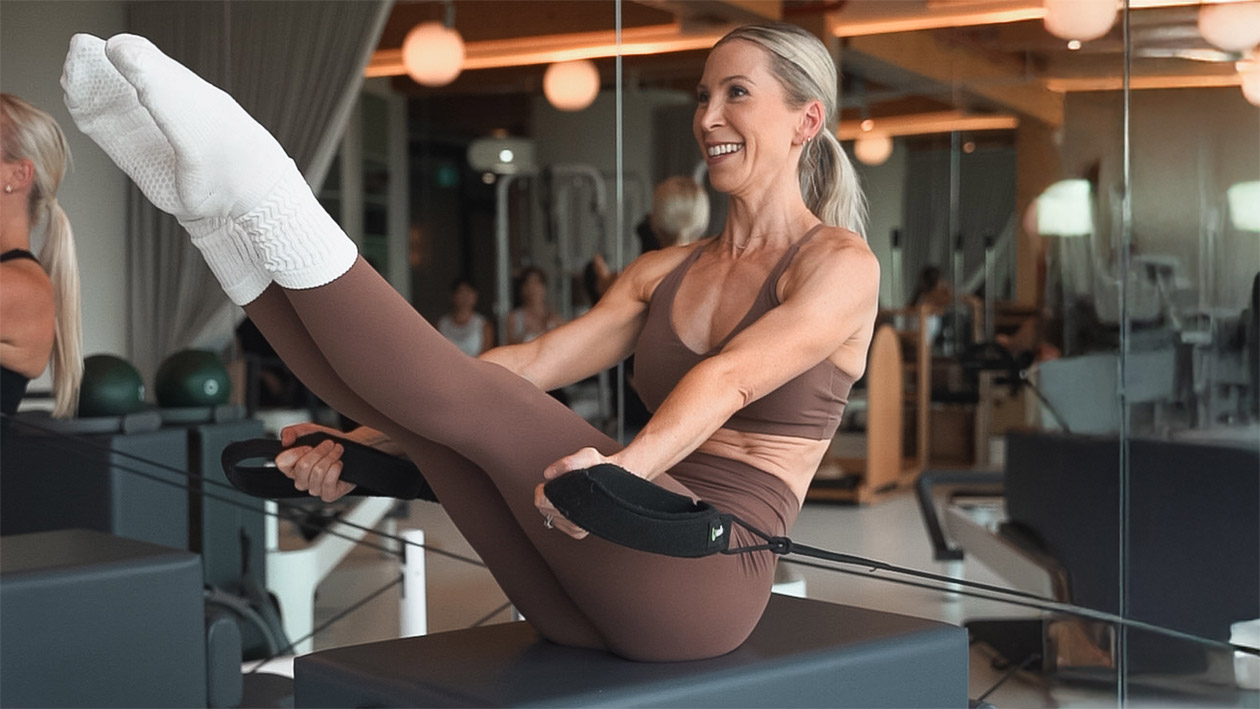
For those embarking on or continuing their Pilates journey, a common question arises: how frequently should one practice to achieve optimal results? The answer varies depending on experience level, fitness goals, and lifestyle factors, read on to learn more…
Frequency Recommendations Based on Experience Level
Pilates frequency should align with your experience level to ensure safety and steady progress. Different stages of Pilates practice require different approaches to frequency.
Beginners Starting Their Pilates Journey
For those new to Pilates, a gradual introduction is recommended. Starting with 2-3 sessions per week, or at least 6 sessions in your first month, provides sufficient practice to learn the fundamentals while allowing your body to adapt to new movement patterns. This frequency helps beginners develop body awareness and start feeling comfortable with the exercises.
If you’re completely new to Pilates, starting with 1-2 sessions per week allows you to learn the basics without overwhelming your body. This measured approach gives newcomers time to adjust to the unique demands of Pilates while building a foundation of strength and stability.
Intermediate and Advanced Practitioners
As you progress beyond the beginner stage, frequency can be adjusted according to your growing proficiency and body adaptation. Intermediate practitioners can benefit from 3-4 sessions per week to continue building on their foundation.
Advanced practitioners and athletes may maximise their results with 4-5 sessions per week. At this level, the body has adapted to the demands of Pilates and can handle more frequent training while still allowing for adequate recovery between sessions.
Frequency Based on Specific Fitness Goals
Your personal fitness objectives play a crucial role in determining how often you should practice Pilates.
Weight Loss and Body Composition
For those focusing on weight loss, combining Pilates with cardiovascular exercise yields optimal results. Practicing Pilates 3-4 times a week can boost metabolism and contribute to fat reduction, especially when supplemented with cardio workouts. This frequency helps create the caloric deficit needed for weight loss while simultaneously building lean muscle.
To achieve more rapid improvements in body composition, many experts recommend 3-4 sessions per week.
Muscle Toning and Strength Building
If muscle toning is your primary goal, a frequency of 4-5 times per week is recommended to effectively sculpt muscles, improve strength, and maintain muscle elasticity. This higher frequency provides consistent stimulus for muscle development without overtaxing the body.
For general strength enhancement, the American College of Sports Medicine recommends engaging in strength training exercises like Pilates at least twice a week, focusing on major muscle groups with moderate to high intensity [1].
Flexibility, Posture, and Rehabilitation
For improved flexibility and posture, a consistency of 3 times per week is ideal for gradually enhancing body alignment and joint mobility. This frequency allows for progressive adaptation of connective tissues and postural muscles.
Those using Pilates for rehabilitation purposes should adopt a more cautious approach, beginning with 1-2 sessions per week and gradually increasing the frequency as strength and mobility improve. In terms of other health benefits, a study demonstrated that a twice-weekly Pilates program focusing on pelvic floor strengthening over 12 weeks effectively reduced symptoms of stress urinary incontinence in women [2].
Once you’ve decided on your weekly frequency, the next step is choosing the right type of Pilates for your goals.
Expert Recommendations and Scientific Evidence
Joseph Pilates, the founder of the method, recommended practicing at least three times per week for optimal results. This recommendation remains foundational in Pilates instruction today.
Scientific research supports structured frequency guidelines. A study found that participants who engaged in Pilates with two one-hour sessions per week showed improvements in abdominal strength, upper spine posture, and core stability [3]. These improvements were particularly notable for preventing neck-shoulder disorders.
Another study demonstrated that a Pilates training program conducted twice weekly helped improve balance in elderly adults, suggesting potential benefits for fall prevention. Such evidence underscores the efficacy of consistent, properly spaced Pilates sessions.
Balancing Pilates with Other Forms of Exercise
If you’re already engaged in other forms of exercise, such as strength training or running, incorporating Pilates 1-2 times per week serves as an excellent complement. This frequency helps enhance core stability, balance, and flexibility, which in turn improves performance in other activities.
Health and fitness experts Heather Milton and Perri Edwards recommend doing Pilates twice per week in addition to other workouts. This approach allows Pilates to support other training by correcting muscle imbalances and improving movement efficiency.
For those using Pilates as their primary form of exercise, a higher frequency is beneficial. Complete Pilates recommends 2-3 sessions per week if Pilates is your only form of exercise, ideally with a mix of equipment-based and mat-based practices. This approach ensures sufficient training stimulus while still allowing for recovery.
Many of our customers benefit from minimum of 3 times per week, with the option to increase to 4-5 times weekly for further improvements in strength, flexibility, and endurance. Such frequency aligns with the broader physical activity guidelines that recommend at least 150 minutes of moderate exercise per week.
Signs You Need to Adjust Your Pilates Frequency
Your body will provide signals indicating whether your current Pilates frequency is appropriate.
Listening to Your Body
Pay attention to persistent fatigue, soreness, or lack of progress, as these may indicate that you need to adjust your Pilates frequency or intensity. Recovery is the phase where muscles, tissue, and bones repair themselves after exercise, and insufficient recovery can impede progress.
Conversely, if you find your current routine too easy or are not seeing desired results, it might be time to increase your frequency or intensity. The principle of progressive overload applies to Pilates just as it does to other forms of exercise.
